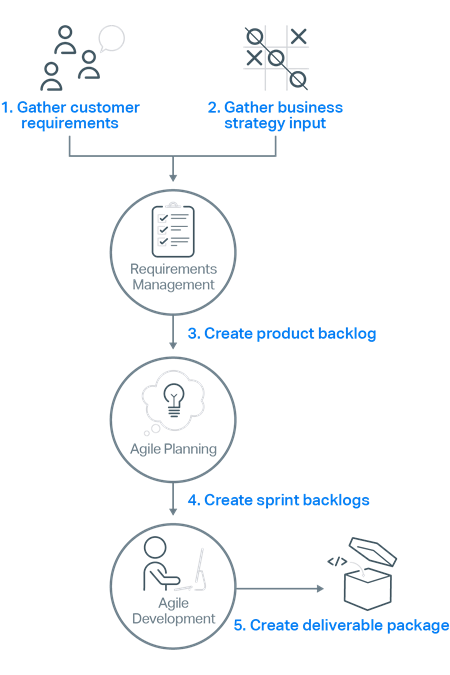Agile Development Workflow
The following diagram summarizes the key steps in an Agile development process:

where the numbered steps are as follows:
- Create a list of requirements from customer feedback.
- Create a list of requirements based on your internal needs. These can be for anything at all, including new features, bug fixes, infrastructure and systems work, or technical debt.
- Combine your customers' requirements and your internal requirements into a product backlog. The product backlog is a prioritized list of the work that your development team will undertake to add the different items from your customers' and internal requirements.
- Use the product backlog to create sprint backlogs, which you use to define and track the work that will be done by the development
team in a series of sprints. Sprints are also often referred to as "iterations".
The length of a sprint is typically between one and four weeks and is usually fixed for the duration of a project.
During each sprint, developers take items from the sprint backlog, work on them, and complete them by the end of the sprint.
At the end of each sprint, the items on that sprint's backlog must be completed; not just coded, but tested, documented, and integrated into a working product that could be deployed (if required).
- Produce a deliverable product package, if required.
At the end of a sprint you return to the Agile planning stage to create the next sprint backlog.
At the end of the project you return to the requirements gathering stage to create the new product backlog.